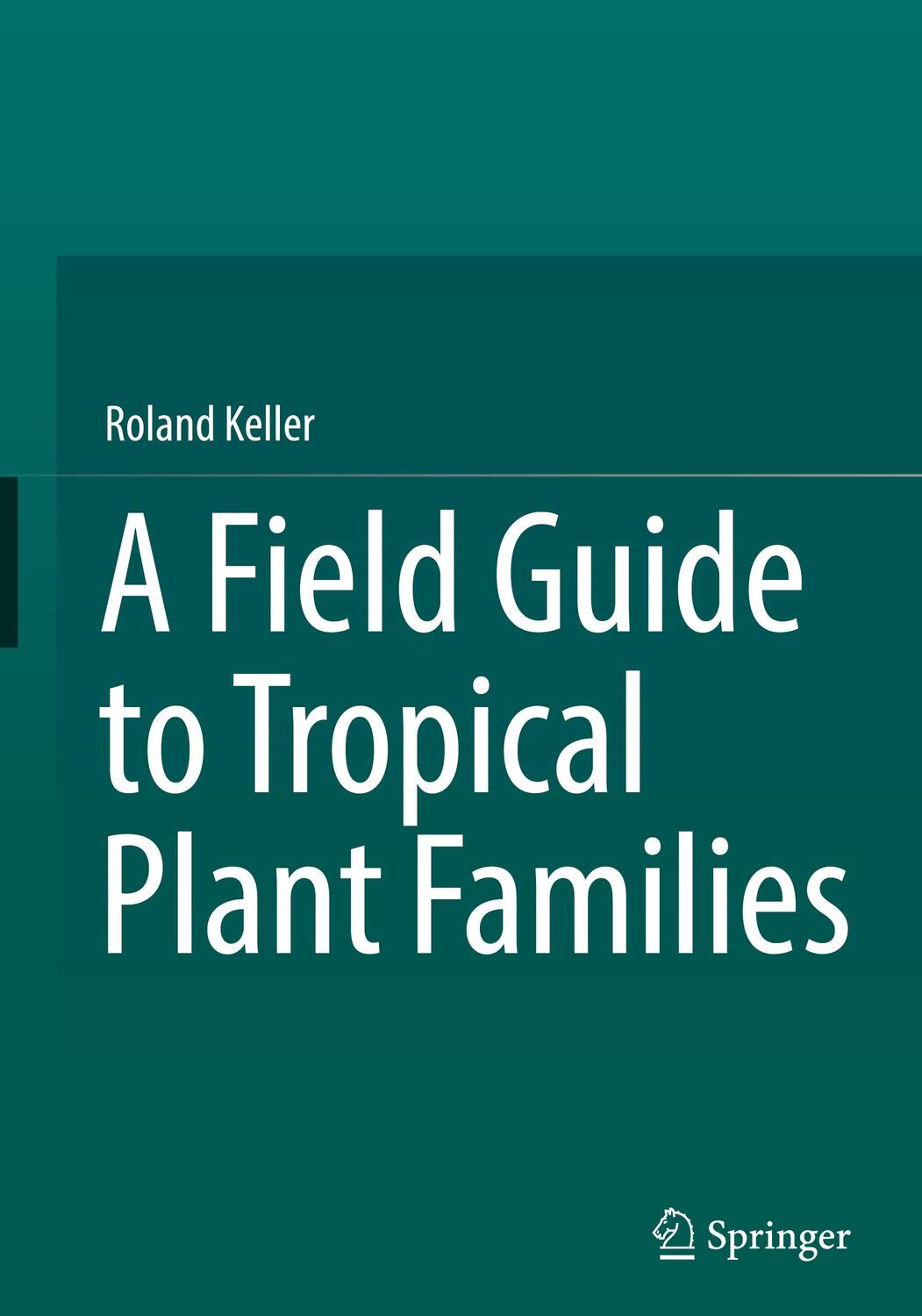153,95 €*
Versandkostenfrei per Post / DHL
Lieferzeit 2-3 Wochen
Unlike most such guides or keys, this book can be used anywhere in the tropics and provides, in a straightforward two or three-step process, identification to the level of families, which are now circumscribed according to molecular as well as morphological characters in the universally accepted scheme of the Angiosperm Phylogeny Group.
Plant architecture is not a prerequisite theme for plant identification; however, we think that an introduction to this subject is not out of place in this book (architectural traits are taxonomically sound): it is now time for botanists working in the tropics to have an idea on how the whole organism keeps growing.
Within the family accounts, there is information concerning important economic plants with notes on the larger genera and, particularly helpfully, discussion of families readily confused and how to separate them. Descriptions of the families rely on short diagnosis bolstered by many photographic pictures, lines drawings and extracts from the author¿s field books, all showing features of plants as they are found in the forest.
Unlike most such guides or keys, this book can be used anywhere in the tropics and provides, in a straightforward two or three-step process, identification to the level of families, which are now circumscribed according to molecular as well as morphological characters in the universally accepted scheme of the Angiosperm Phylogeny Group.
Plant architecture is not a prerequisite theme for plant identification; however, we think that an introduction to this subject is not out of place in this book (architectural traits are taxonomically sound): it is now time for botanists working in the tropics to have an idea on how the whole organism keeps growing.
Within the family accounts, there is information concerning important economic plants with notes on the larger genera and, particularly helpfully, discussion of families readily confused and how to separate them. Descriptions of the families rely on short diagnosis bolstered by many photographic pictures, lines drawings and extracts from the author¿s field books, all showing features of plants as they are found in the forest.
Roland Keller is an independent botanist living in Switzerland. He was trained in the "Montpellier School "of botanists, where he was initiated into the fields of plant architecture and botanical illustration, aspects which have remained important throughout his career.
He has worked as a Research Associate at the Institute of Systematic Botany and Geobotany of the University of Lausanne and has carried out most of his fieldwork in the tropical forests of numerous countries, as well as in alpine areas. He has also been involved with surveys of biodiversity in Switzerland.
This book is a completely revised version of his previous field guide : Identification of Tropical Woody Plants in the Absence of Flowers, which was published almost 20 years ago.
Contains original information for tropics (based upon vegetative traits, range) in many cases not to be found elsewhere
Provides a two or three-step identification process to the family or even genus rank
Written in an accessible and lively style, the work is richly illustrated
Part I - User manual and architectural concepts. Chapter 1. Introduction.- Chapter 2. How to use this book 6.- Chapter 3. Architectural concepts and key to the models.- Part II. Identification keys.- Chapter 4. Key to the groups of families of trees and shrubs (groups 1 to 52).- Chapter 5. Keys to families of trees and shrubs.- Chapter 6. Supplementary keys.- Chapter 7. Keys to the groups of families of lianas and woody epiphytic (groups 53 to 57).- Chapter 8. Keys to families of lianas and woody epiphytes.- PART III. Description of the families.- Chapter 9. Acanthaceae to Asteraceae.- Chapter 10. Bignoniaceae to Buxaceae.- Chapter 11. Cactaceae to Cycadaceae.- Chapter 12. Dichapetalaceae to Dipterocarpaceae.- Chapter 13. Ebenaceae to Euphorbiaceae.- Chapter 14. Fagaceae.- Chapter 15. Gentianaceae to Goupiaceae.- Chapter 16. Hamamelidaceae to Humiriaceae.- Chapter 17. Icacinaceae s.l. to Irvingiaceae.- Chapter 18. Juglandaceae.- Chapter 19. Lamiaceae to Lythraceae.- Chapter 20. Magnoliaceae to Myrtaceae.- Chapter 21. Nyctaginaceae,- Chapter 22. Ochnaceae to Oxalidaceae.- Chapter 23. Pandaceae to Putranjivaceae.- Chapter 24. Rhabdodendraceae to Rutaceae.- Chapter 25. Sabiaceae to Symplocaceae.- Chapter 26. Tetramelaceae to Torricelliaceae.- Chapter 27. Ulmaceae s.l. to Urticaceae.- Chapter 28. Verbenaceae to Vochysiaceae.- Chapter 29. Zygophyllaceae s.l.- Chapter 30. Herbaceous versus arborescent habit in the families and orders of flowering plants - evolutionary trends.
| Erscheinungsjahr: | 2023 |
|---|---|
| Fachbereich: | Botanik |
| Genre: | Biologie |
| Rubrik: | Naturwissenschaften & Technik |
| Medium: | Buch |
| Seiten: | 512 |
| Inhalt: |
xvii
494 S. 59 s/w Illustr. 850 farbige Illustr. 494 p. 909 illus. 850 illus. in color. |
| ISBN-13: | 9783031059414 |
| ISBN-10: | 3031059417 |
| Sprache: | Englisch |
| Ausstattung / Beilage: | HC runder Rücken kaschiert |
| Einband: | Gebunden |
| Autor: | Keller, Roland |
| Auflage: | 1st ed. 2023 |
| Hersteller: | Springer International Publishing |
| Maße: | 260 x 183 x 32 mm |
| Von/Mit: | Roland Keller |
| Erscheinungsdatum: | 09.02.2023 |
| Gewicht: | 1,266 kg |
Roland Keller is an independent botanist living in Switzerland. He was trained in the "Montpellier School "of botanists, where he was initiated into the fields of plant architecture and botanical illustration, aspects which have remained important throughout his career.
He has worked as a Research Associate at the Institute of Systematic Botany and Geobotany of the University of Lausanne and has carried out most of his fieldwork in the tropical forests of numerous countries, as well as in alpine areas. He has also been involved with surveys of biodiversity in Switzerland.
This book is a completely revised version of his previous field guide : Identification of Tropical Woody Plants in the Absence of Flowers, which was published almost 20 years ago.
Contains original information for tropics (based upon vegetative traits, range) in many cases not to be found elsewhere
Provides a two or three-step identification process to the family or even genus rank
Written in an accessible and lively style, the work is richly illustrated
Part I - User manual and architectural concepts. Chapter 1. Introduction.- Chapter 2. How to use this book 6.- Chapter 3. Architectural concepts and key to the models.- Part II. Identification keys.- Chapter 4. Key to the groups of families of trees and shrubs (groups 1 to 52).- Chapter 5. Keys to families of trees and shrubs.- Chapter 6. Supplementary keys.- Chapter 7. Keys to the groups of families of lianas and woody epiphytic (groups 53 to 57).- Chapter 8. Keys to families of lianas and woody epiphytes.- PART III. Description of the families.- Chapter 9. Acanthaceae to Asteraceae.- Chapter 10. Bignoniaceae to Buxaceae.- Chapter 11. Cactaceae to Cycadaceae.- Chapter 12. Dichapetalaceae to Dipterocarpaceae.- Chapter 13. Ebenaceae to Euphorbiaceae.- Chapter 14. Fagaceae.- Chapter 15. Gentianaceae to Goupiaceae.- Chapter 16. Hamamelidaceae to Humiriaceae.- Chapter 17. Icacinaceae s.l. to Irvingiaceae.- Chapter 18. Juglandaceae.- Chapter 19. Lamiaceae to Lythraceae.- Chapter 20. Magnoliaceae to Myrtaceae.- Chapter 21. Nyctaginaceae,- Chapter 22. Ochnaceae to Oxalidaceae.- Chapter 23. Pandaceae to Putranjivaceae.- Chapter 24. Rhabdodendraceae to Rutaceae.- Chapter 25. Sabiaceae to Symplocaceae.- Chapter 26. Tetramelaceae to Torricelliaceae.- Chapter 27. Ulmaceae s.l. to Urticaceae.- Chapter 28. Verbenaceae to Vochysiaceae.- Chapter 29. Zygophyllaceae s.l.- Chapter 30. Herbaceous versus arborescent habit in the families and orders of flowering plants - evolutionary trends.
| Erscheinungsjahr: | 2023 |
|---|---|
| Fachbereich: | Botanik |
| Genre: | Biologie |
| Rubrik: | Naturwissenschaften & Technik |
| Medium: | Buch |
| Seiten: | 512 |
| Inhalt: |
xvii
494 S. 59 s/w Illustr. 850 farbige Illustr. 494 p. 909 illus. 850 illus. in color. |
| ISBN-13: | 9783031059414 |
| ISBN-10: | 3031059417 |
| Sprache: | Englisch |
| Ausstattung / Beilage: | HC runder Rücken kaschiert |
| Einband: | Gebunden |
| Autor: | Keller, Roland |
| Auflage: | 1st ed. 2023 |
| Hersteller: | Springer International Publishing |
| Maße: | 260 x 183 x 32 mm |
| Von/Mit: | Roland Keller |
| Erscheinungsdatum: | 09.02.2023 |
| Gewicht: | 1,266 kg |









